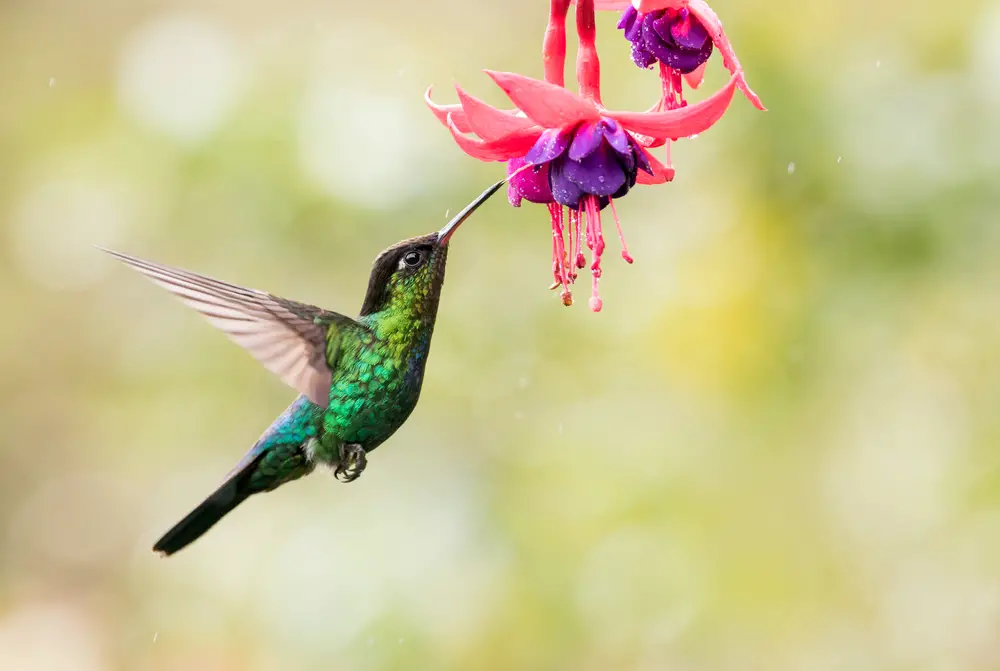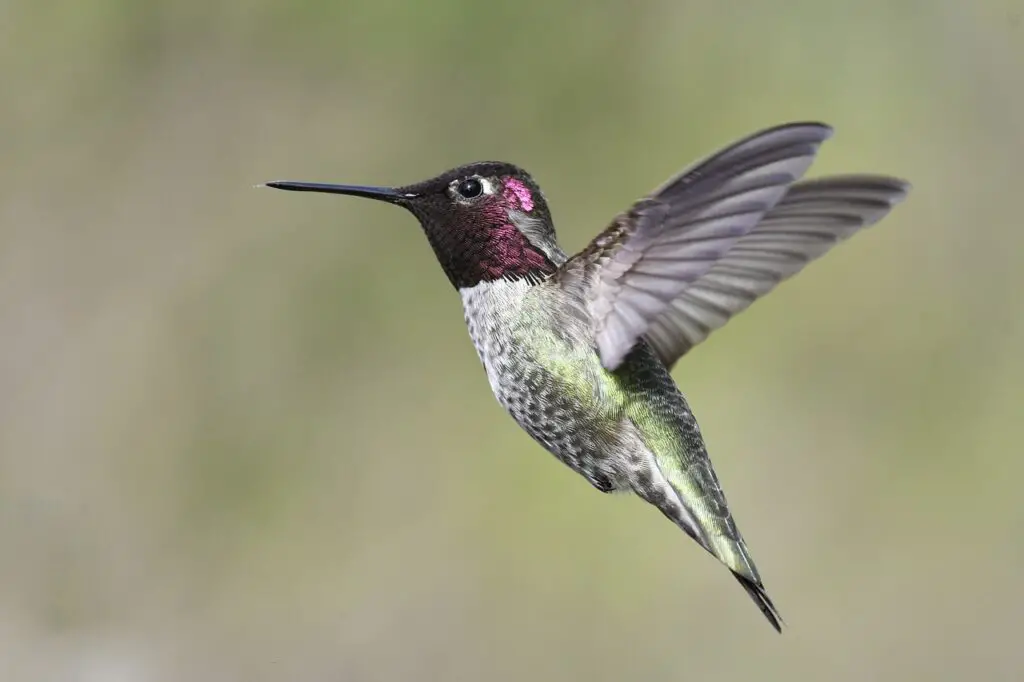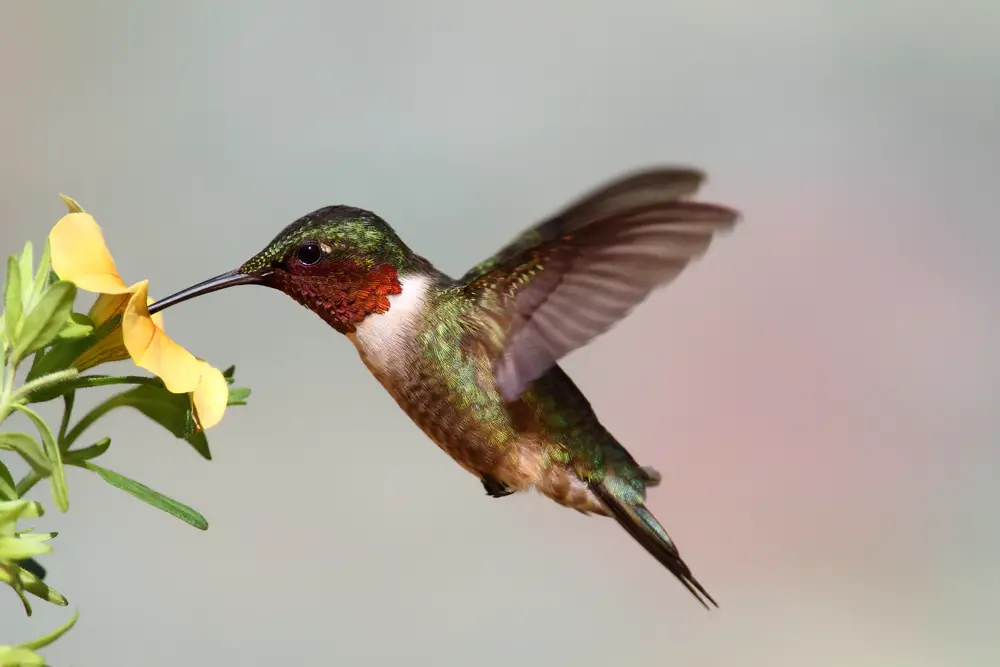Avian flight is an exceptionally complex process and has been the focus of scientific study for centuries.
This article explores the question of whether or not birds can fly backwards, providing a comprehensive examination into the capabilities of different species in terms of avian flight.
With this investigation, it will be possible to gain further insight into how various bird species are able to use their wings with such precision and agility.

Types Of Avian Flight
Avian flight is an incredible feat of physical and evolutionary accomplishment. It has enabled birds to dominate the skies for millions of years, as well as adapting their wing design and behavior in response to environmental changes.
The most common form of avian locomotion is powered flight, which requires a complex combination of wingspan, airspeed control and lift from the wings.
Wings designed for gliding or soaring can take advantage of thermals and updrafts in order to remain aloft for extended periods with very little effort expended by the bird.
More agile species have adapted specialized aerobatic maneuvers such as spinning, looping and sharp turns that allow them to quickly change direction while minimizing energy expenditure.
Though some birds are capable of hovering briefly, they are unable to sustain this position without expending large amounts of energy.
In addition, most birds lack the muscle strength necessary to fly backwards using only their primary feathers; however, some species may use tail-feathers in conjunction with their wings during certain behaviors such as landing or maneuvering near obstacles.
The Physics Behind Bird Flight
Raptor-like birds, such as eagles and hawks, possess unique capabilities that allow them to soar gracefully across the sky. They use their wings to generate lift and thrust through a complex combination of air pressure, flight speed, geometry and aerodynamics – allowing them to remain in flight for extended periods of time.
The physics behind bird flight includes:
- Aerodynamic forces generated by wings which can be manipulated by changing wing shape or position during certain maneuvers;
- The ability to control airflow over the wings using tail feathers, creating an increase in lift force;
- Manipulation of body movements, via tilt and roll, to adjust the angle of attack and modify the direction of flight;
- Adjustment of flight speed to maximize efficiency when flying long distances;
- Utilization of thermals (rising columns of warm air) for sustained gliding without expending energy.
While birds are capable of achieving great speeds while flying forwards, they do not have the same capability while attempting backwards motion due to the decrease in lift available at slower speeds. Therefore it is unlikely that most species would be able to maintain enough power or altitude necessary for successful backward flight without additional support from outside sources such as wind gusts.
Which Birds Can Fly Backwards?
Flying backward, or flying in reverse, is a unique flight maneuver performed by only a few bird species, primarily hummingbirds. The rapid wing beats and specialized wing structure of hummingbirds enable them to hover and fly in any direction, including backward. Here are some bird species known for their ability to fly backward:
- Hummingbirds (Trochilidae family): Hummingbirds are the primary bird species capable of flying backward. They have incredibly fast wing beats, ranging from 12 to 80 beats per second, which enables them to hover, fly forward, backward, and even upside down. Their wings’ unique shape and ability to rotate at the shoulder joints allow for precise control and maneuverability in all directions.
It’s important to note that while hummingbirds are the primary birds known for flying backward, other bird species may occasionally exhibit brief backward flight movements during specific flight behaviors or in unique circumstances. However, hummingbirds are the most adept and well-known birds that can consistently and purposefully fly backward.
Bird Anatomy & Wing Structure
A bird’s ability to fly is a remarkable feat of physics and engineering. The aerodynamics of bird flight has been studied for centuries, but only recently have we begun to understand the intricate details behind it.
Wing design plays an important role in allowing birds to achieve their incredible flying capabilities, as does the arrangement of feathers on the wings which determines the overall shape and size of each wing surface. Flight patterns are also incredibly complex with different species having varying levels of maneuverability depending on their body design and weight distribution.
The anatomy and structure of a bird’s wings are essential for powered flight, controlling lift, thrust, drag, and stability during flight. Bird wings consist of two main components: primary feathers located at the front edge that provide lift; and secondary feathers along the trailing edge that act like airbrakes to slow down or control direction changes mid-flight. Both types of feathers help create turbulence between them ensuring maximum efficiency when flying forward or backward at various speeds.
Additionally, certain feather structures allow some birds to soar without flapping their wings while others can hover stationary in one place providing additional advantages over other animals unable to do so.
Flight Mechanics & Aerodynamics
A bird’s wings enable it to generate lift during forward motion by creating an area of low pressure above the wing, allowing it to become airborne.
To fly backwards, however, a bird must be able to generate sufficient thrust – or power – to counteract aerodynamic drag. The amount of power required for a bird to fly backwards is extraordinary; roughly ten times larger than that needed for flying forwards.
This additional power requirement comes from having to overcome not only air resistance but also gravity, which acts as an opposing force when moving against the direction of airflow.
Birds’ anatomy simply cannot produce this much energy quickly enough and efficiently enough to sustain backward flight over any length of time, making true reverse flight impossible without outside assistance such as wind gusts or tethering.
Advantages & Disadvantages Of Flying Backwards
The previous section discussed the mechanics and aerodynamics of flight in birds. Now, let’s explore the advantages and disadvantages of flying backwards.
Birds are capable of flying backwards for brief periods of time due to their unique anatomy; however, this type of movement comes at a cost.
Flying backwards requires more energy than forward flight as it is not an efficient use of air currents or gravity, making it less desirable from an energetic standpoint.
Additionally, depending on the species, backward flight may be limited by wing size or shape which could reduce maneuverability while airborne.
As such, most birds prefer to fly forwards as they can take advantage of optimal speeds and flight patterns that enable them to conserve energy.
When evaluating the benefits vs costs associated with backward flight in birds, there are several considerations: maneuverability, speed potential, endurance level and power requirements.
Maneuverability may be reduced due to limitations imposed by wing size or shape whereas speed potential will likely diminish when operating against wind resistance forces or other environmental conditions.
Endurance levels must also be taken into account since longer duration flights require more energy expenditure overall.
Lastly, specific power requirements must be met for successful backward flying given its inherently higher demand for thrust compared to forward flight.

Examples Of Backward Flying Birds
Avian flight is a complex process and some birds are able to fly backwards. In order for this to be possible, the bird’s flight muscles have to generate enough power and air pressure has to be exerted on its wings in a specific manner.
The hummingbird is one of the few species that can hover and it is also capable of flying backwards with short bursts of speed. Its powerful wing muscles allow it to make quick adjustments both up and down as well as left or right by using rapid changes in airflow over its wings.
The Rufous Hummingbird’s body size gives them an advantage when they need to move quickly which helps the bird use their backward flying ability effectively during times of danger or while pursuing prey.
This type of maneuvering requires very precise control from the avian flier but if done successfully, it allows them access to areas that would otherwise be inaccessible due to obstacles such as trees, cliffs, or buildings. Therefore, being able to fly backwards makes these birds more adept at evading predators or catching insects hidden in tight spaces.
Conclusion
Although many species are capable of flying backwards, only the hummingbird does. While some birds use backward flight in specific contexts such as mating displays or evasive maneuvers, overall it remains a less utilized form of avian propulsion.
In order to take full advantage of their aerial capabilities, most birds rely more heavily on forward motion to navigate their environment. Ultimately, birds’ ability to fly forwards provides them with greater agility than if they flew backwards.

